#uqàm
Text
UQàM's SDHPP in Montreal is holding an EMERGENCY PROTEST and needs YOUR ATTENDANCE. The situation in Ghazzah has gone from catastrophic to imminently deadly for millions.
Please take the time out of your day this afternoon and attend.
It is taking place at Dorchester Square near metro Peel, at 2PM today.
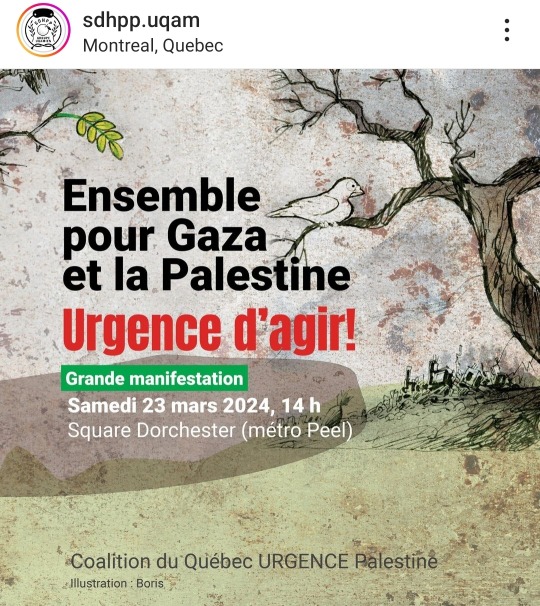

Their demands:
- An immediate ceasefire and the free movement of aid in Ghazzah
- A stop to all exports of military supplies - direct or indirect - towards the zionist occupation.
- An end to the 19 year blockade on Ghazzah.
225 notes
·
View notes
Text
"Besides, I was two hundred and thirty-seven years old, last Midsummer eve; and a man must not fall in love with his grandmother, you know."
"But you are not my grandmother," said I.
"How do you know that?" she retorted. "I dare say you know something of your great-grandfathers a great deal further back than that; but you know very little about your great-grandmothers on either side."
George MacDonald (Phantastes, Chapter 1). Bolded emphasis added.
The first thing I noticed was that women, in genealogical research as in many other fields, were often left aside. [… A]ccording to Francine Cousteau Serdongs, who was lecturer at UQÀM in social work and a genealogy graduate and practitioner, very few genealogists know the name of their uterine pioneer (the woman at the origin of a women lineage, traced from mother to daughter). She also stressed that the terms that are used in genealogical research seem to forget about women: for example, an ancestry is rarely called patrilineal because it is considered so by default.
Audrey Pepin (The Omission of Women in Family Trees)
10 notes
·
View notes
Text
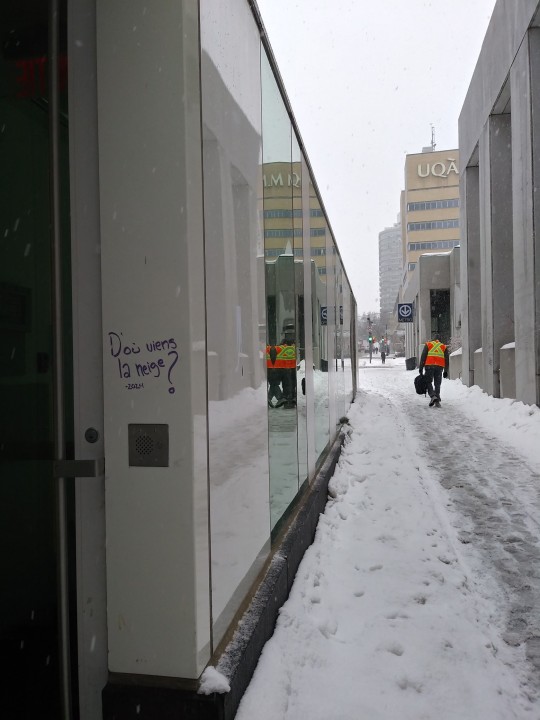
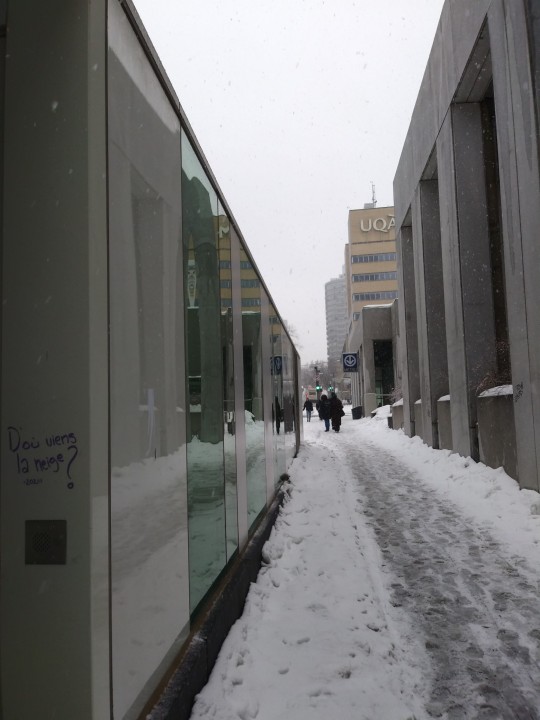
0 notes
Video
vimeo
L'historien de l'art Laurier Lacroix et Oser sa voix-La Galerie Roger Bellemare». from Winston McQuade on Vimeo.
LE CULTUREL 2.0 avec Winston McQuade : Un incontournable pour tout amateur d’arts visuels «Oser sa voix-La Galerie Roger Bellemare 1971-2021» de l’historien d’art émérite (UQÀM) Laurier Lacroix, publié aux Presses de l’Université de Montréal. Qui est Roger Bellemare…? pum.umontreal.ca
0 notes
Photo


Intérieur du campus de l’Université du Québec à Montréal, Montréal, Québec
Architectes: Jodoin Lamarre Pratte Architectes
Photos: Jean Mercier
#Architecture#design#1970s#70s#1973#interior#intérieur#brutalism#brick brutalism#Montréal#montreal#Québec#quebec#canada#UQÀM#uqam#jean mercier
47 notes
·
View notes
Text
Papa UQÀM

UQÀM
Université progressiste qui défend l’utilisation du mot “N” tu fais maintenant dans la putophobie.
Drôle de paradoxe si on se rappelle l’argent qui t’as été déversé par la famille de la défunte Nelly Arcan. Nelly n’était pas trop pute pour toi? Ou était-ce parce que sa putitude était classée rangée serrée dans les livres? Parce qu’elle avait fait surface après les éloges de sa prouesse littéraire dont tu t’attribue l’enseignement? UQUÀM proxénète donc? S’approprier les gains, mais absolument pas les démarches et les sacrifices pour y arriver.
Les institutions n’ont jamais arrêté la chasse aux sorcières, sauf que maintenant on ne les pends plus, on les lapides à coup de mots dégradants sur la place publique, ou, à coup de pénalité de 125 000$. Femmes indépendantes, libres, sexuelles, assumées, dérangeantes. Le dilemme entre la vierge la femme de petite vertue, La Vierge Marie contre Marie Madeleine… UQUÀM pour être progressiste tu nous ressors le plus vieux compte de la terre…
Helene Bourdeau, son argent, ses efforts, son diplôme, son corps, sa photo.
#MYBODYISNOTANINSTITUTIONNALPLAYGROUND
#uqam#fuck patriarchy#vonkassel#montreal#my body my choice#my body my rights#my body my rules#femenist#feministe#female empowerment#nelly arcan#papauqam#papauqàm#uqàm#tds
6 notes
·
View notes
Text
even if they were western canadian it'd make a lot of sense for sam to go to school in montreal bc 1) distance 2) john would just hate francophones & sam would want to get to him lol 3) culture
8 notes
·
View notes
Video
Montréal, 15 juin 2011. Street music. da Philippe Du Berger
Tramite Flickr:
Musiciens de la rue Saint-Denis, au métro Berri-UQÀM.
#Rue St-Denis#Personnage#Boul. de Maisonneuve#street.musicians#musiciens.de.la.rue#métro#Montréal#instrument.de.musique#accordéon#musicien#Québec#coin de rue#street corner#UQÀM
1 note
·
View note
Text
Pierre Ayot’s Work in Progress: following the lineage of the artist’s studio
Pierre Ayot’s Work in Progress: following the lineage of the artist’s studio
By Stephanie Gagné
Although 2016 has not been an ideal year for most citizens of planet Earth, it certainly has been a successful year for the late Montreal native artist, Pierre Ayot (1943 – 1995). The multidisciplinary artist has had his works retrospectively exhibited in Montreal galleries, moreover, his infamous (and contentious) public sculpture, La croix du Mont-Royal, was re-mounted facing…
View On WordPress
#art#artist studio#Atelier Graff#exhibition#exhibitions on this month#galleries#installation#installations#Jean NOel Desmarais Pavillion#La croix du Mont Royal#Montreal#montreal museum of fine arts#multidisciplinary artist#Pierre Ayot#sculpture#Stephanie Gagne#UQÀM
1 note
·
View note
Photo

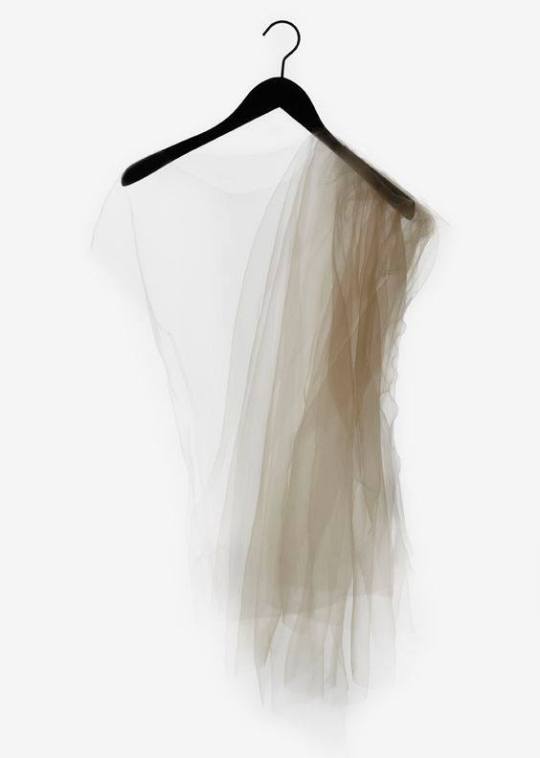
Ying Gao is a designer and professor at UQÀM’s Graduate School of Fashion in Montreal. She makes interactive garments (inflatable or light-sensitive), thinks about climatic issues and has a great love for architecture.
Designer Ying Gao - project Nagoya Berlin includes two pieces inspired by the mobility of people and information today. A scarf and a dress change function to become respectively a dress and a bag-screen, easy to transport.
7 notes
·
View notes
Text
Montreal's vanished landscapes are at the heart of two new books | Montreal Gazette
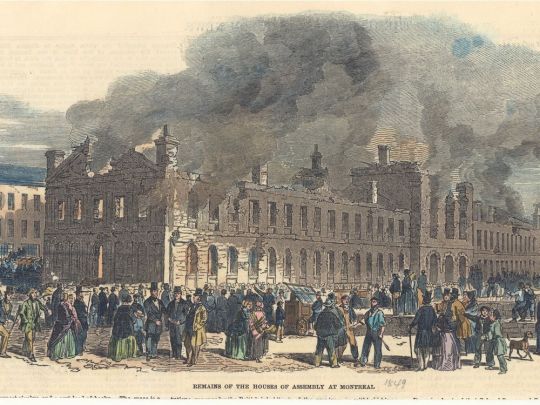
Curving thoroughfares like Côte-des-Neiges Rd. trace the contours of former rivers. Orphaned row houses, peeking out between towering high rises, bear witness to the proud greystone terraces that once covered downtown. Even though streetcars disappeared from Montreal in 1959, the neighbourhoods to which they gave birth, like Notre-Dame-de-Grâce, Snowdon, Villeray and Park Extension, attest to their role in developing the city.
Vanished landscapes figure prominently in two new books on Montreal — one on a major archaeological site preserving the vestiges of the former Parliament of Canada and the other on the role of photography in the fight to save heritage.
Montréal Capitale , produced by the Pointe-à-Callière archaeology and history museum, vividly re-creates Montreal’s brief reign as the capital of Canada from 1844 to 1849. That status went up in flames when an English-speaking mob, urged on by the Montreal Gazette, torched the Parliament building to protest against a bill reimbursing Quebecers for damages incurred during the 1837-38 Rebellions.
Concluding that ethnic tensions in Montreal were too volatile for it to remain the capital, the government moved out and spent several years alternating between Quebec City and Toronto. Unable to reach a consensus on a permanent capital, Canadian leaders petitioned Queen Victoria, who chose Ottawa on New Year’s Eve, 1857. It became the seat of government in 1866, a year before Confederation.
Article content
Montreal’s brief chapter as capital has been all but forgotten, said Louise Pothier, Pointe-à-Callière’s curator and chief archaeologist and editorial director of the book.
“Historians and archaeologists have almost bypassed an essential episode in the country’s history,” she said.
Yet it was a pivotal moment, marking the attainment of responsible government — in which the executive is responsible to an elected assembly — and of French as an official language of the legislature, along with English, Pothier noted. It also spurred the development of Montreal, inspiring grandiose plans to beautify the urban environment.
Built in 1833-34 as St. Ann’s Market, the more than 100-metre-long stone Parliament building collapsed in on itself during the fire, preserving fragments of hundreds of thousands of artifacts.
From 2010 to 2017, a series of archaeological digs turned up the incredibly well-preserved vestiges beneath Place d’Youville, where the museum hopes to erect a new $120-million wing in the years to come.
Article content
Citizens trying to save the Victorian neighbourhood east of McGill lost the first round in 1972, when developer Concordia Estates razed hundreds of homes to build the La Cité complex at Parc Ave. and Prince-Arthur St.
But they went on to score a significant victory when Phase 2 of the project was cancelled and the Canada Mortgage and Housing Corp acquired the surviving buildings to convert them into co-operative housing. In 1983, the Milton Park Community was inaugurated. Covering six city blocks, it now houses more than 1,000 residents in 16 co-ops and six non-profit associations.
While the buildings destroyed for Phase 1 are long gone, the black-and-white photographs taken in the heat of the action by Gutsche and her partner, David Miller, live on in museums and archives. “If such a choice were possible, we would have kept the buildings, and not the images of what was gone,” she laments.
In another chapter, Louis Martin, a professor of architectural history at UQÀM, explores the work of artist, architect and university professor Melvin Charney, who died in 2012.
In the 1970s, as protests mounted, Charney became increasingly radicalized. In 1972, he curated a collective exhibition at the Montreal Museum of Fine Arts titled “Montréal: plus ou moins? Montréal: plus or minus?” Among the works was a photomontage he created of St-Laurent Blvd. between René-Lévesque Blvd. and Ste-Catherine St., a streetscape now mostly demolished.
Charney is probably best remembered for organizing Corridart, an outdoor art exhibition commissioned by the Quebec government for the 1976 Summer Olympics. Four days before the Games opened, then-mayor Jean Drapeau infamously had it torn down overnight.
Article content
It included a series of installations on Sherbrooke St. by architects Jean-Claude Marsan, Lucie Ruelland and Pierre Richard. Directly across the street from the former site of the Van Horne mansion, they erected an enlarged version of Abbott’s photograph of the mansion being demolished, with an orange finger pointing at the nondescript high rise that had replaced it.
“We regret the finger pointing at our building, which many of our tenants and prospective customers take as offensive,” Azrieli complained in a letter to Drapeau.
Other topics include city of Montreal photographer Jean-Paul Gill’s images of the former Red Light District, demolished in the late 1950s; photography in the former crime tabloid Allô Police; the 1968 Sir George Williams computer centre occupation; urban exploration (urbex) photography; and the archives of Ramsey Traquair, director of McGill University’s School of Architecture from 1913 to 1939.
This content was originally published here.
0 notes
Text
UQàM's SDHPP has organized an emergency protest for March 23rd at 2PM in demand of a ceasefire. It is taking place at Dorchester Square, near Peel metro.
L'SDHPP d'UQàM a organisé une manifestation urgente à 14h00, le 23 mars, en appui d'un cessez-feu. Elle se déroulera au Square Dorchester, près du métro Peel.


90 notes
·
View notes
Video
vimeo
Un film de / A film by Camille Poirier, Fiction, Canada, 2020, 13min56. Screener - Version originale française avec sous-titres anglais - OV with eng subs Production : Camille Poirier | Distribution : SPIRA — SYNOPSIS — Afin de participer au vidéoclip de son frère aîné, Clara, une fillette de 13 ans au look tomboy, accepte de subir un changement de style radical. Cette transformation lui permet ensuite d’observer des différences dans ses rapports avec les amis de son frère. In order to be in her older brother’s music video, Clara, a 13-year-old tomboy, agrees to undergo a radical change of style. She soon notices that this transformation changes her brother’s friend’s behaviour towards her. — ÉQUIPE/CREW — Scénario/Screenplay : Camille Poirier Direction de la photographie/Cinematographer : Étienne Dagenais Montage/Editor : Camille Poirier Prise de son/Sound : Antoine Faucher Mixage/Sound mix : Michael Binette et Antoine Faucher Conception sonore/Sound design : Anthony Buckley Musique /Music : Yung Kartz Direction artistique/Artistic Direction : Mélodie Prégent Interprètes/Cast : Marilou Forgues, Olivier Carignan, Jacob Whiteduck-Lavoie, Zachary T. Gauthier, Rosie-Anne Bérubé-Bernier — BIO — Camille Poirier est originaire de l’Abitibi-Témiscamingue. Elle habite actuellement à Montréal où elle a obtenu un baccalauréat en cinéma à l’UQÀM en 2014. D’abord spécialisée en montage vidéo, Le vidéoclip est le premier court-métrage de fiction qu’elle réalise depuis la fin de ses études. Elle est d’une curiosité insatiable et son désir de faire du cinéma provient essentiellement de sa fascination pour le monde qui l’entoure et son besoin de l’investiguer. Camille Poirier is from Abitibi-Témiscamingue. She currently lives in Montreal where she obtained a bachelor's degree in film at UQÀM in 2014. First specialized in video editing, The Music Video is the first short fiction film she has made since the end of her studies. Her desire to make movies comes from a fascination with the world around her and her need to investigate it. — PRIX/AWARDS — - 2020 - deadCenter Film Fest | Grand Jury Best Live Action Short Award Festival film Jeune de Lyon | Prix Meilleur scénario — FESTIVALS — - 2020 - In competition | Un poing c'est court,France In competition | Muestra International de Cine de Palencia, Spain In competition | Kurz Filmwoche Regensburg, Germany Selected | Carrousel de RImouski, Canada In competition | Short Film Breaks, Roumania In competition | ShorTS International Film Festival, Italy In competition | FEST – New Directors | New Films Festival, Portugal In competition | Minikino Film Week, Indonesia In presentation | Off-Courts Trouville, France In competition | Seoul international Extreme-Short Image & Film Festival, South Corea In competition | Ciné-Jeune, France Best scenario | Festival du film jeune de Lyon, France In competition | Cinemagic, United Kingdom In competition | Cinekid, The Netherlands In competition | Uppsala Short Film Festival, Sweden In competition | KUKI Festival | interfilm Berlin, Germany In competition | Athen Int. Children Film Fest, Greece Best Short Film | Longue vue sur le court, Canada In presentation | Festival Tous Courts, France In competition | Film Festival for Women's Rights, Korea - 2021 - In competition | Cinema on the Bayou, USA In competition | Rendez-Vous du Cinéma Québécois et Francophone, Canada Prix du public | Destiny City Film Festival, USA In competition | Festival de films féministes - Filministes, Canada In competition | Festival International du film pour enfants de Montréal (FIFEM), Canada In competition | Positively Different Short Film Festival, Greece In competition | Rendez-Vous Québec Cinéma, Canada In competition | Cinema Sisters International Film Festival, USA In competition | Stony Brook Film Festival, USA ___________ FR : https://bit.ly/3HvrqqK EN : https://bit.ly/3qOrcUZ
0 notes
Text
Proofreading
I proofread friends’ short scenarios and they proofread mine. I actually did that a lot last year since I was studying scriptwriting at UQÀM. It was my first and only creative degree to this day, so I was a little bit scared at first when the teachers told us that we’d have to write short scenes every week and that our classmates were going to proofread them.
That scary feeling did not last long though. In CEGEP, I did a degree in Police Technology. I got used to being criticized and judged there by my teachers and classmates. We’d often do simulations where actors in a room would pretend to be in a conflict, and we’d have to go in and act as if we were the police. The whole class was always watching and taking notes, ready to tell us what we did wrong. So, hearing critiques on a text I wrote, after thinking about it a little, was not so bad.
Critiques can be painful, especially when you really get naked in the text you write. A text coming from a very deep part of your soul will expose your insecurities to your reader, and a harsh critique could make it seem like your feelings are not valid.
Nonetheless, proofreading is in my opinion the best way to get good at writing. You have to be able to take the hit of the critique, and to be sure to never do the same mistake again. Also, you have to be able to know what’s arbitrary and what is not. Sometimes someone will critique your work, but in the end it will only be because this person does not like your style. Becoming good at receiving critiques takes time and practice.
I think the one thing we should remember is that what we communicate is not what we want to say, but what the other person receives. In this sense, proofreading is a very good way to verify that the message you want to spread is understood correctly.
0 notes
Text
Screenplay Workshop, Montréal
Screenplay Workshop, Montréal Event, Installation, Public Art, Canadian Landscape Architecture, QC Urban Building Photos
Screenplay Workshop in Montréal
1 Jul 2021
Design: Jean Verville PhD Architecte and Professeur + DES7029 UQAM + Tania Paula Garza Rico + Maxime Brouillet
Location: Montreal, Quebec, Canada
Screenplay Workshop
Invited by the UQÀM School of Design to present an intensive 10-day workshop, architect Jean Verville, professor at the School of Architecture at Université Laval, offers a collaborative work gamification laboratory.
Exploring the notion of an event as a means of activating a reappropriation of the deserted city, but also of demonstrating the interdependence of individuals and their participatory responsibility, Verville introduces students to a method tracing his professional process, from ideation to realization and to diffusion.
As the professor and his special guests submit themselves to various challenges to activate the production of heuristic tools, the students develop a repertoire of more than 5,000 shapes, collages, models, materials, details, and lexicons, without justification of origin, meaning, or possible interpretations.
Brought together in a protean collective repertoire in the service of individual appropriation, this assemblage enables everyone to verify observations, claim intuitions, and provoke fantasies. Collectively, the group determines a simple performative device, quick and economical to manufacture, which will serve as a support for the realization of distinct proposals.
Far from assimilating individuality, this collective device invites everyone to develop a choreographic performance contributing to a reflection on the city, its architecture, promenades, and public spaces. Each performance, offered up to the interpretation of the group of students, becomes additional material for exploration and experimentation. From the multitude of images, each student makes their own narrative transposition participating in a constellation of visions testifying to the profusion of perceptions.
Screenplay Workshop in Montréal, QC – Project Information
Design: Jean Verville PhD Architecte and Professeur + DES7029 UQAM + Tania Paula Garza Rico + Maxime Brouillet
DES 7029 — International design: events
This class of the Diploma of Advanced Studies Specialized in Event Design from the University of Quebec at Montreal addresses the project approach through an introduction to the methods of internationally renowned practitioners.
DES 7029 Q UQAM — Students:
Charles-Antoine Beaulieu, Alizée Fontanez, Jade Gueudar-Delahaye, Laurence Lafleur, Théo Lamblin, Manon Le Guernic, Viviane Morin, Megan Morrissette, Marie Porracchia, Antoine Quimper-Giroux, Lucie Raffegeau, Gabrielle Verrette-Paquette, Marie-Astrid Vieux, Aurélia Windrif
Teacher:
Jean Verville, Ph.D. art, Architect, and Professor School of Architecture of Laval University
Special guests:
Tania Paula Garza Rico architect
Maxime Brouillet, photographer
Alex Lamontagne, designer
Camille Asselin, M.A. architecture
Samuel Landry, M.A. architecture
France Goneau, artistic advisor
Maylis Persoon, auxiliary
Partner: v2com
About Jean Verville, Ph.D., Architect, and Professor
In parallel with his professorial activities and his professional practice, Jean Verville pursues research and creation process that is part of the questioning of otherness and intersubjectivity that shape the understanding of our environments. His proposals illustrate issues and positions specific to current visual culture with its values and concerns. With an apparent casualness, Verville presents a reflection on spatiality and on the capacity of architecture to distract from a regulated routine through a metamorphosis of everyday life. Observing the impacts of popular culture, Verville offers playful interactions inviting individual appropriations to highlight formal attributes, collective and collaborative dimensions of architectural space, and to celebrate the multiplicity of perceptions.
Photographer: Maxime Brouillet
Screenplay Workshop, Montréal images / information received 010721 from v2com newswire
Location: Montreal, Québec, Canada
Montreal Architecture
Québec Architecture Designs – architectural selection below:
Montreal Architecture Designs – chronological list
Montreal Architecture Walking Tours
Montreal Architecture News
Montreal Houses
Castor Des Érables Development, Rosemont–La Petite-Patrie, Montréal, QC
Architects: Parkhouse
photographer : Parkhouse/Bardagi
The Castor Des Érables Development in Montréal
Charlebois Lake House, Ste-Marguerite-du-Lac-Masson, north of Montreal, Québec
Architects: Paul Bernier Architecte
photographer : James Brittain
House in Ste-Marguerite-du-Lac-Masson
Canadian Architecture
Canadian Architects
Comments / photos for the Screenplay Workshop, Montréal page welcome
The post Screenplay Workshop, Montréal appeared first on e-architect.
0 notes
Text
SÉANCE #11 : [S'Informer à l'ère de Google et des médias sociaux]
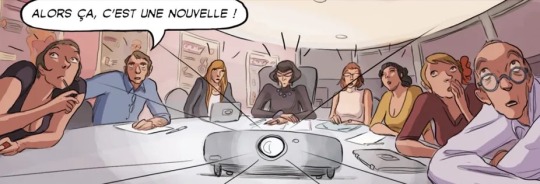
(MediaEntity, cité dans Falgas, 2015, paragr. 1).
L’ère numérique dans laquelle nous vivons présentement engendre de profondes modifications pour les médias traditionnelles. Comprenant la télévision, la presse écrite, ainsi que la radio, ils étaient les seuls à pouvoir produire de l’information pour le public. Or, aujourd’hui, l’apparition des médias numériques entraîne des phénomènes, dont l’hybridation des médias traditionnels, la convergence, de même que d’autres formes de journalisme.
D’abord, l’hybridation est « caractérisée par l’implication des nouvelles technologies et particulièrement des images de synthèse, ainsi que du numérique » (Barski, cité dans Guilet, 2013, p. 41). Edmond Couchot définit ce phénomène comme « un nouvel ordre visuel (Couchot, cité dans Guilet, 2013, p. 41). Ainsi, pour les médias traditionnels, l’hybridation se traduit par un déplacement des contenus vers des plateformes numériques, afin de rivaliser avec les grands médias de masse, tels que les réseaux sociaux ou les moteurs de recherche.
Ensuite, « [l]e terme « convergence » recouvre des pratiques d’exploitation de ressources conjointes ou complémentaires dans un cadre de propriété croisée ou de conglomérat » (Deschênes, 2019, p. 8). « Ces pratiques sont susceptibles d’optimiser le rendement des entreprises et d’accroître leur pouvoir de marché » (Deschênes, 2019, p. 8). Par exemple, Québecor, un conglomérat médiatique actif, notamment, dans la presse écrite, la télévision, la radio, l’édition de livres et la production de disques, exerce un certain contrôle sur le marché des produits culturels québécois, ce qui lui permet d’imposer ses conditions aux créateurs, d’assurer une visibilité à « ses » vedettes et de mousser la vente de leurs œuvres (Deschênes, 2019, p. 8). Cette concentration des médias a des conséquences potentielles, notamment sur la diversité de l’information (Deschênes, 2019, p. 8).
Puis, la technologie numérique rend possible une véritable participation du public à la production et l’enrichissement de l’information, sous la forme de contenus produits par les internautes eux-mêmes ou par le commentaire, le débat et les corrections de contenus produits par des journalistes professionnels (Charron et Carbasse, 2019, p. 19). « Certains y voient l’instauration d’un dialogue démocratique entre les professionnels de l’information et les citoyens, qui viendrait se substituer à la communication unidirectionnelle et top-down, typique de l’ère des médias de masse. D’autres y voient au contraire un risque de déprofessionnalisation d’une fonction jugée essentielle à la démocratie et à un alourdissement supplémentaire de la tâche pour les journalistes professionnel » (Charron et Carbasse, 2019, p. 19-20).
BIBLIOGRAPHIE
Charron, J. et Carbasse, R. (2019). Les défis du journalisme à l’ère numérique, monPortail – Université Laval, https://sitescours.monportail.ulaval.ca/contenu/sitescours/039/03907/202101/site123512/modules826055/module1050568/page2843775/bloccontenu2741835/201909_M02%20Charron-Carbasse_Les%20défis%20du%20journalisme.pdf?identifiant=e01274306ab05e7350f5acdf9d0759d2106f184e
Deschênes, U. (2019). L’économie des médias, monPortail – Université Laval, https://sitescours.monportail.ulaval.ca/contenu/sitescours/039/03907/202101/site123512/modules826055/module1050575/page2843814/bloccontenu2741985/201909_M08%20Deschenes_L’economie%20des%20medias.pdf?identifiant=84c682333913754a9940169bb247e4b7458f11e0
Falgas, J. (2015, 19 octobre). À l’ère numérique, le journalisme a-t-il perdu tout son sens ?. The Conversation. https://theconversation.com/a-lere-numerique-le-journalisme-a-t-il-perdu-tout-son-sens-49312
Guilet, A. (2013). Pour une littérature cyborg : L'hybridation médiatique du texte littéraire [thèse de doctorat, Université du Québec à Montréal et Université de Poitiers]. Archipel UQÀM. https://archipel.uqam.ca/6010/1/D2569.pdf
0 notes
